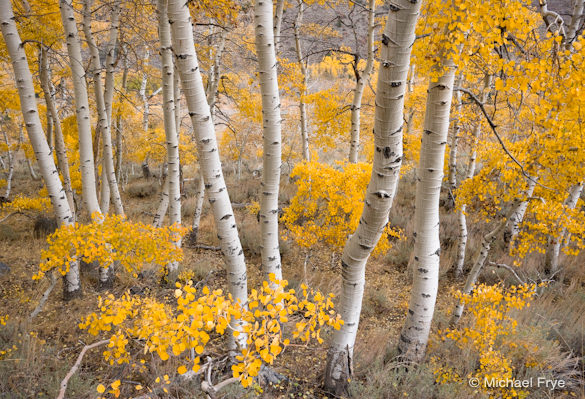Photography Tips
by Michael Frye | Jun 30, 2011 | Photography Tips, Vision and Creativity
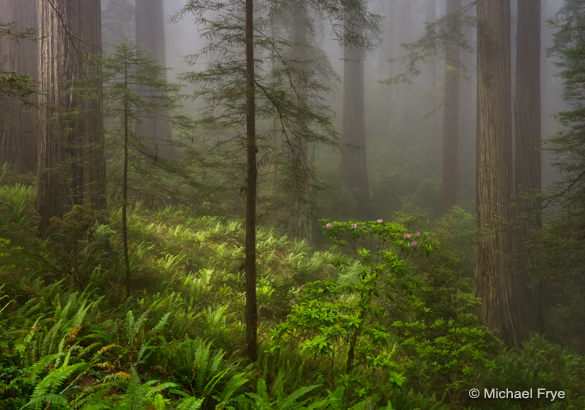
Redwoods, ferns, and rhododendrons near the northern California coast
Last week my wife Claudia and I visited our son Kevin in Arcata, California (he goes to Humboldt State University there). Arcata is just north of Eureka, along the northern coast of California, in redwood country.
Eleven years ago we’d camped in this area, and hiked a beautiful trail through the redwoods (nine-year-old Kevin complaining the whole way, especially on the steep climb back). The next morning I returned alone with my camera, found the forest enveloped in dense fog, and made one of my favorite photos ever.
I’d never gone back to that spot, but forecasters predicted patchy fog for last Wednesday morning, and it seemed like a good time to go. So we rose early and drove through fog, then sun, and back into fog. As we neared the trailhead I caught a glimpse of a roadside redwood grove that took my breath away. In the fog it was just so beautiful, so… primeval. I felt I’d traveled back in time a million years.
(more…)
by Michael Frye | Jun 9, 2011 | Photography Tips
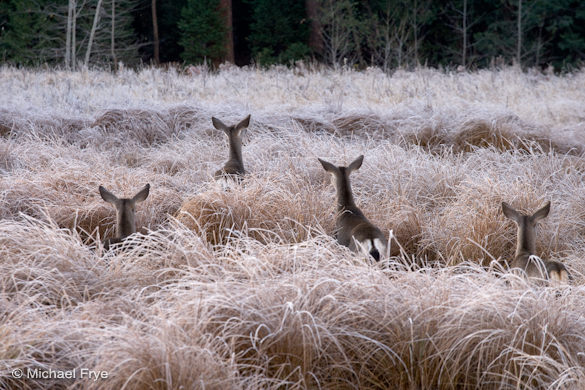
Sometimes it's easy to pick the winners—they just jump out at you, like this image did when I first saw it on my screen. But usually editing is a more difficult task.
First of all, thanks to everyone who commented on my post from last Friday. Your participation is such a vital part of this blog, and makes it more fun for me, and everyone else.
Of the three dogwood images I posted, “C” was clearly the favorite. But there were some strong votes for A and B as well. Just another example of how subjective photography is!
It’s also an example of how difficult it can be to edit your work. When I ask students to bring a portfolio of ten images to a workshop, they often tell me how hard it was to narrow it down to such a small selection. Many have never had to do that before.
But editing—and I mean this in the traditional sense of selecting images, rather than processing or developing them—is one of the most important aspects of photography.
(more…)
by Michael Frye | Apr 7, 2011 | Digital Photography Basics, Photography Tips
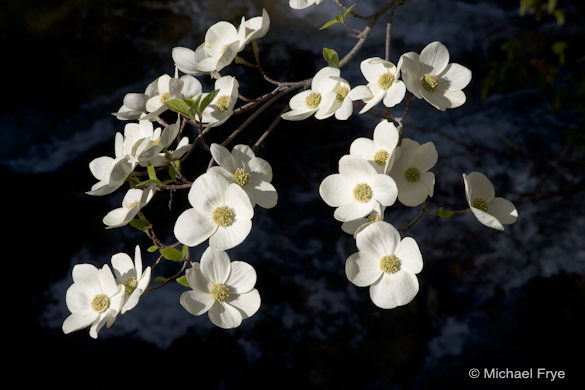
Most camera's light meters would read the dark areas in the background and overexpose these dogwood blossoms. To correct for this, you need to either override the meter with exposure compensation, or adjust the exposure manually.
In the first part of this series I explained one of the most fundamental aspects of digital photography: reading histograms. In this edition I’ll delve into the next step: how to adjust the exposure when the histogram doesn’t look right the first time.
(more…)
by Michael Frye | Mar 27, 2011 | Announcements, Photography Tips
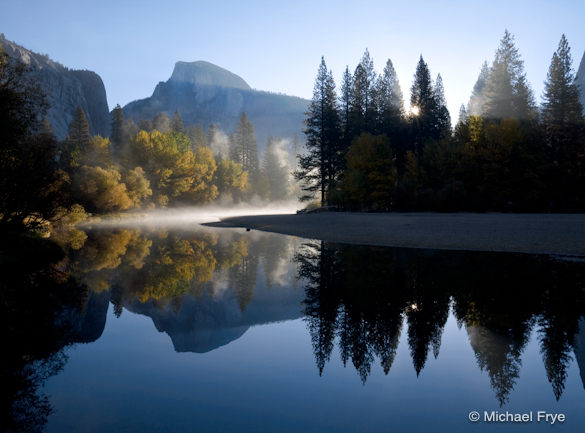 Autumn Sunrise, Half Dome and the Merced River
Autumn Sunrise, Half Dome and the Merced River
How do you give your photographs impact? How do you convey the grandeur of the landscape in a small, two-dimensional image? You have to find your focus. I’m not talking about turning the ring on your lens—I’m talking about focusing your composition on the essentials and finding a strong design.
My latest article in Outdoor Photographer magazine discusses exactly how to do that. Titled Find Your Focus, it shows you how to communicate your vision by simplifying, finding focal points, creating depth, and looking for patterns. The article is scheduled for the May issue, due out next month, but it’s already on the OutdoorPhotographer.com website—a sneak preview. I hope you enjoy the article!
by Michael Frye | Mar 3, 2011 | Digital Darkroom, Photography Tips
Lightroom has grown up. I’ve made 30×40 inch prints from this image using only Lightroom (except for the final print sharpening). Yet Photoshop can still do things that Lightroom can’t.
“Should I get Lightroom or Photoshop?” This is a question I get asked a lot, usually by people who own Photoshop Elements and are thinking of upgrading to either Lightroom or the full version of Photoshop.
Six years ago this was an easy decision, because Lightroom didn’t exist. If you wanted to upgrade from Elements, the full version of Photoshop was the only real choice. But then Apple launched Aperture, Adobe countered with Lightroom, Nikon and Canon upgraded their software, and a host of other companies added even more options.
For now I’m going to keep this simple and just talk about Lightroom and Photoshop—mainly because these are the two most popular choices, but also because they’re the two applications I’m most familiar with, and they’re natural choices for people wishing to graduate from Adobe’s other photo-editing program, Elements.
(more…)
by Michael Frye | Feb 3, 2011 | Digital Photography Basics, Photography Tips
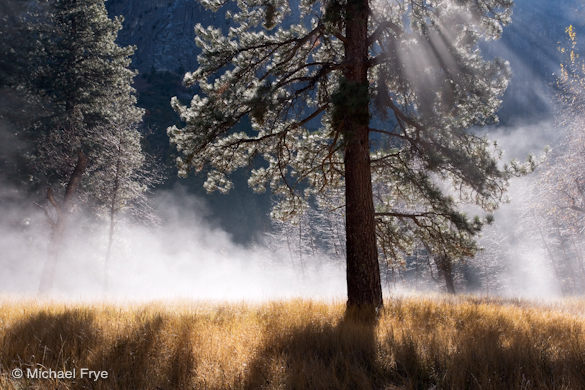
Understanding how to read a histogram is the best way to judge exposure in high-contrast scenes like this.
With film, exposure always involves some guesswork—you can never be sure you made the correct exposure until you develop the film. But with digital cameras you can tell immediately whether the right amount of light reached the sensor by looking at a histogram. This ability to instantly evaluate exposure is a game changer—the single biggest advantage of digital photography over film.
But many photographers are still guessing about exposure because they’re unable to decipher the histogram’s cryptic messages. Instead they judge exposure by how bright the image looks on their camera’s LCD screen. But while those little screens are extremely useful for many things, evaluating exposure isn’t one of them. There are too many variables: screen quality (usually bad), the LCD brightness setting in the camera, and the amount of ambient light.
(more…)





